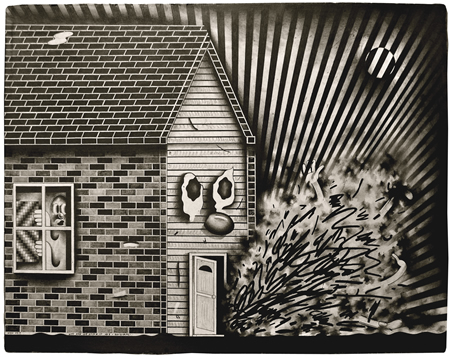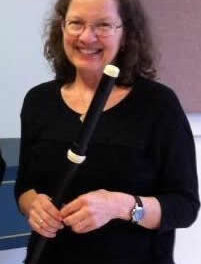Visionary photography? Sounds like an oxymoron. But the huge show at Duke University’s Nasher Museum of Art, billed simply as “Light Sensitive: Photographic Works from North Carolina Collections,” is a fascinating demonstration of the transformative experience that a mixture of mechanics and imagination can create.
As you walk in you will face one of the exhibition’s most dramatic images: the Brooklyn Bridge ablaze as though it were a huge brilliant light bulb against a black sky. For this, Vera Lutter used a pinhole camera! A room-sized pinhole, of course — and, as in all pinhole cameras, colors and tones are reversed.
For his famous “Moonrise, Hernandez, New Mexico,” on the other hand, Ansel Adams had the latest equipment and a cadre of aids when he was struck by the sight of a valley where light from a setting sun spread through the depths of a broad cloud across a line of hills above an unlit town. The darkroom must also have come into play because the crosses in a cemetery fronting the town are touched by sparks of light that have no obvious source. Above, a dark sky contains only the small moon of the title.
In his huge work, “Guardian,” Anthony Goicolea, combines bits and pieces of negatives to create a snowbound arctic scene, with chained huskies, lines of buildings, and a glowering sky. Much of this impressive piece, particularly areas containing the dogs, is deliberately out of scale. Some of it may be imported from unrelated photographs.
As in many cases, the effectiveness of Richard Misrach’s brilliant “Submerged Gazebo, Salton Sea, California,” is redoubled if one knows something of its history, for an entire town lies submerged beneath the unmoving surface of a large empty lake. In the middle distance we see a gazebo that seems to float quietly on the subtle greens and blues of the water. But the title “Submerged Gazebo” is a reminder of the flood that once erased the town, buried by a flash flood. A slight atmospheric film over it all emphasizes both the silence of the present and the sense of the past.
In “Candy Store,” Robert Frank trains and focuses his camera to blur and distort some teenagers gathered around a jukebox. The boys seem undefined as individuals; the well-lit jukebox carries more weight than any of the boys.
With the likes of Adams, Diane Arbus, Henri Cartier-Bresson, Walker Evans, Frank, Sally Mann, Vik Muniz, Alfred Stieglitz, Thomas Struth and others in the show, selecting a few to expand on is a mug’s game. The show runs to May 12.
For details, see the sidebar.












